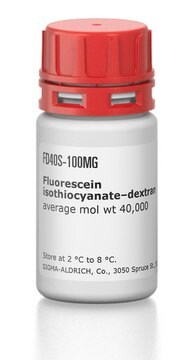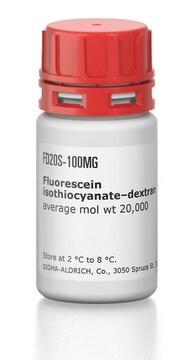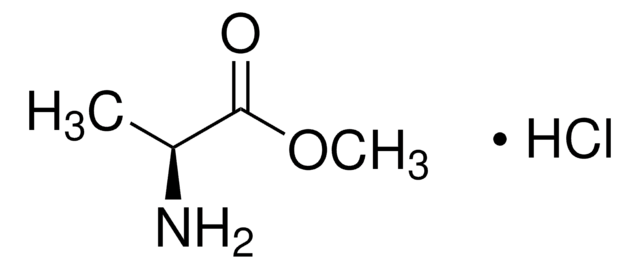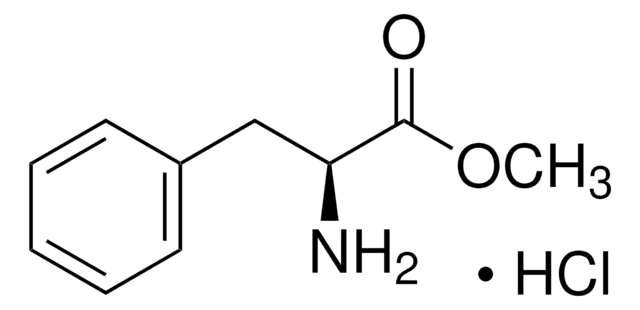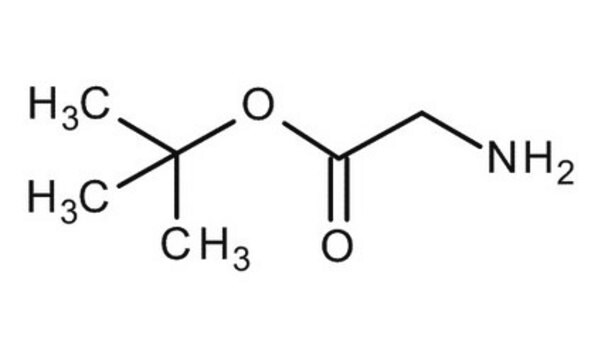G6600
Glycine methyl ester hydrochloride
99%, for peptide synthesis
Synonym(s):
Glycine methyl ester·HCl, Methyl glycinate hydrochloride
About This Item
Recommended Products
Product Name
Glycine methyl ester hydrochloride, 99%
Quality Level
assay
99%
form
powder, crystals or chunks
reaction suitability
reaction type: solution phase peptide synthesis
color
white
mp
175 °C (dec.) (lit.)
application(s)
peptide synthesis
SMILES string
Cl.COC(=O)CN
InChI
1S/C3H7NO2.ClH/c1-6-3(5)2-4;/h2,4H2,1H3;1H
InChI key
COQRGFWWJBEXRC-UHFFFAOYSA-N
Looking for similar products? Visit Product Comparison Guide
General description
Application
Storage Class
11 - Combustible Solids
wgk_germany
WGK 3
flash_point_f
Not applicable
flash_point_c
Not applicable
ppe
Eyeshields, Gloves, type N95 (US)
Choose from one of the most recent versions:
Already Own This Product?
Find documentation for the products that you have recently purchased in the Document Library.
Customers Also Viewed
Our team of scientists has experience in all areas of research including Life Science, Material Science, Chemical Synthesis, Chromatography, Analytical and many others.
Contact Technical Service

